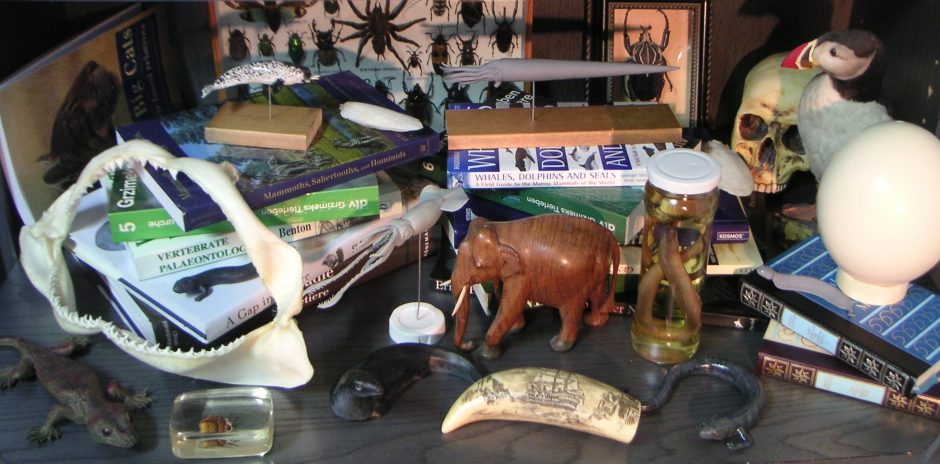There are awesome news about one of the most unusual cetaceans in modern history, an enigmatic hybrid between a narwhal (Monodon monoceros) and a beluga whale (Delphinapterus leucas).
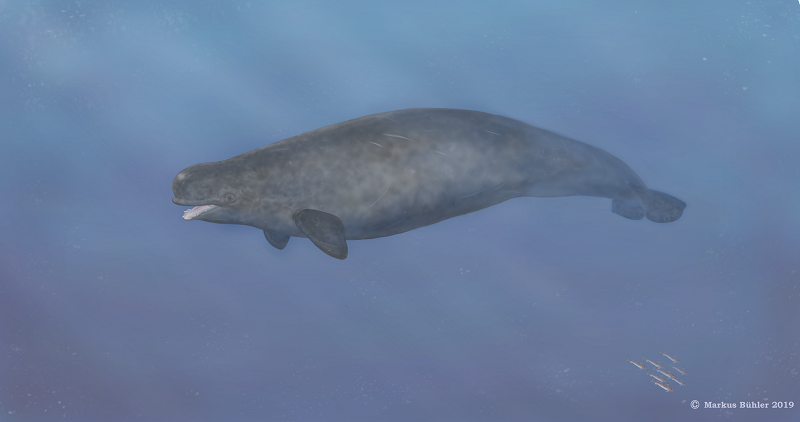
The specimen was shot at Disko Bay, Greenland, in 1986 or 1987 and the skull – the only remaining relic – collected there in 1990 and sent to Copenhagen. I´ve been fascinated by this freak of nature since I´ve read about it for the first time in 2007. From all the photos available at that time I tried to make a reconstruction of it, but I was not really happy with it. In 2017 I had finally the chance to examine the original skull of this specimen in the archives of the Zoological Museum at Copenhagen, what gave me some highly worthy insights into its extremely weird anatomy. Besides the skull only a few vague descriptions of the living animal were known, so dealing with it was like dealing with the remains of a prehistoric animal only known from fossils. This made it of course even more interesting to make a reconstruction of the living whale, which was subsequently termed „narluga“ by some people.
I want to thank here Eline Lorenzen and especially Daniel Klingberg-Johansson for the chance to visit the non-public archive where the skull is located. The public exhibition of the Museum has many incredible and absolutely priceless specimens (more about some of them in a future blogpost), but as usual a lot of the really good stuff is in the archives. Thanks again Daniel for this awesome tour to the museal catacombs!
In this blogpost I want to give you some more background information which is known about the narluga, and how I tried to give the skull a face and a body. As I already wrote it was shot in 1986 or 1987, by an inuit hunter named Jens Larsen. The correct date is not known, as Larsen who didn´t remember the year for sure. It was discovered by Mads Peter Heide-Jørgensen on the roof of a toolshed at Kitsissuarsuit, which is located at the mouth of Disko Bay, West Greenland. Larsen had perceived it unusual enough to save the skull and donated it for further examination. He sadly could not give much more information about it, unless that it had flippers which resembled those of a beluga and a fluke more similar to those of a narwhal, but a coloration which was not white like a beluga or white and dark-gray mottled like a beluga but uniformlys gray and unlike those of those two species. What was even more interesting was the fact that he remembered that there were two additional specimens, which were shot as well. One was lost during the hunt (modern inuit shot belugas and narwhals usually with guns, so a lot of them just sink to the bottom of the sea and are lost), the head of the other one was saved and left near the water for maceration, but never retrieved.
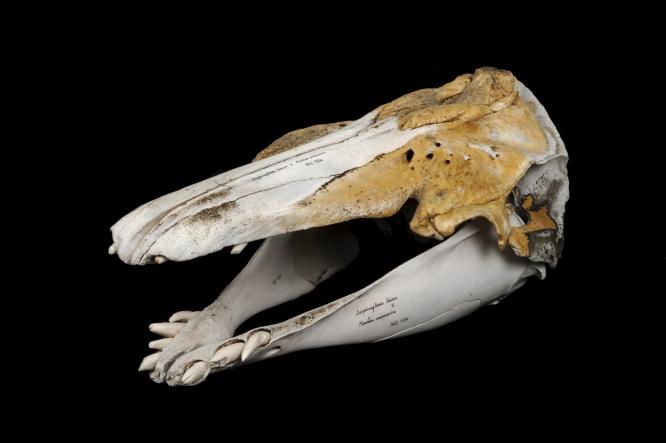
After the skull was sent to Copenhagen, it was examined and compared to various skulls of belugas and narwhals from the collection of the Zoological Museum. It exhibited several unusual features. It was somewhat larger and more elongated than the means of the skulls used for comparison. Its sutures of the premaxilla/maxillare were fused, what indicated that the specimen was already comparably old. The most bizarre feature of it was however the dentition. It was totally unlike any other known whale.
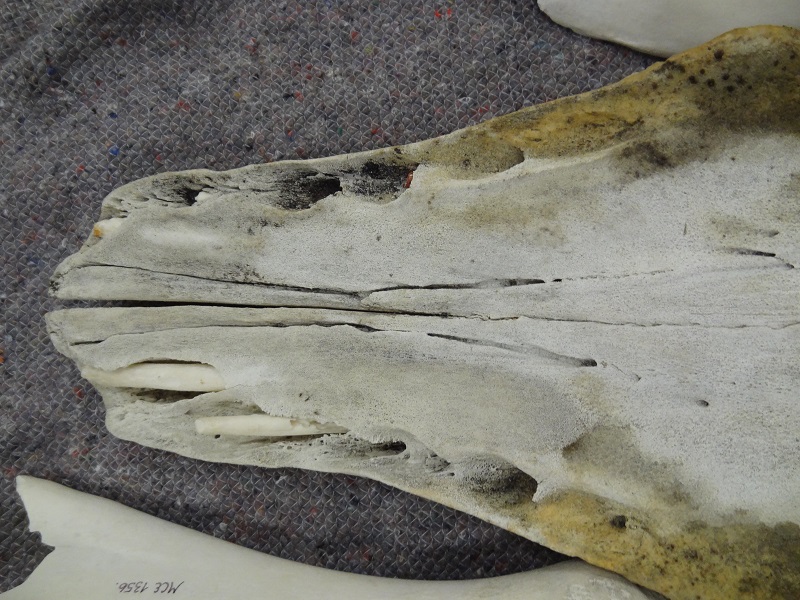
It had originally ten upper and eight lower teeth, from which one of the maxillary teeth was already lost when the skull was found. In the living narluga, six or seven of the upper teeth were likely exposed inside the cavity of the mouth, as they showed also signs of abrasion. The three most anterior teeth however apparantly never erupted through the gums and remained mainly within the bone. Their appearance was extremely strange, very thin, long and horizontally orientated within the bone, a bit similar to the unerupted vestigal teeth of narwhals but lacking their typical knog at the apical end. The more distal teeth were shorter and more curved. According to Lars Jensen, the specimen which sank and was lost had even some visible protruding upper teeth.
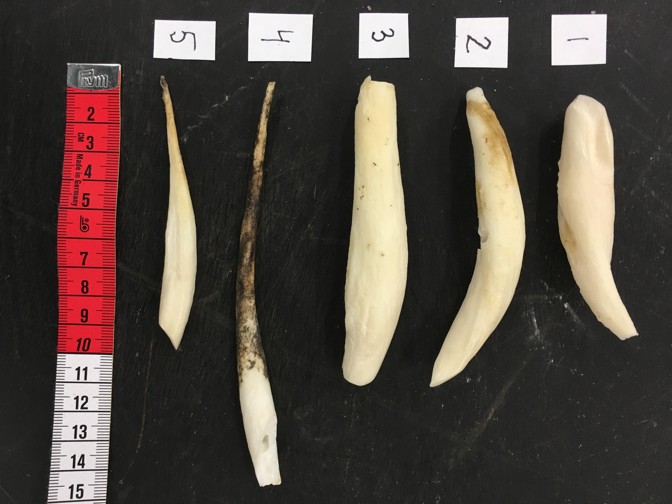
The mandibular teeth in contrast were all eruted, very large and massive, assymetrical in shape and orientation. In the living animal they were likely visible even when the narluga had its mouth closed. Two of those teeth show unusual curving and slight twisting which must have occured during growth, and even longitudinal grooves vaguely similar to those seen in erupted narwhal tusks.
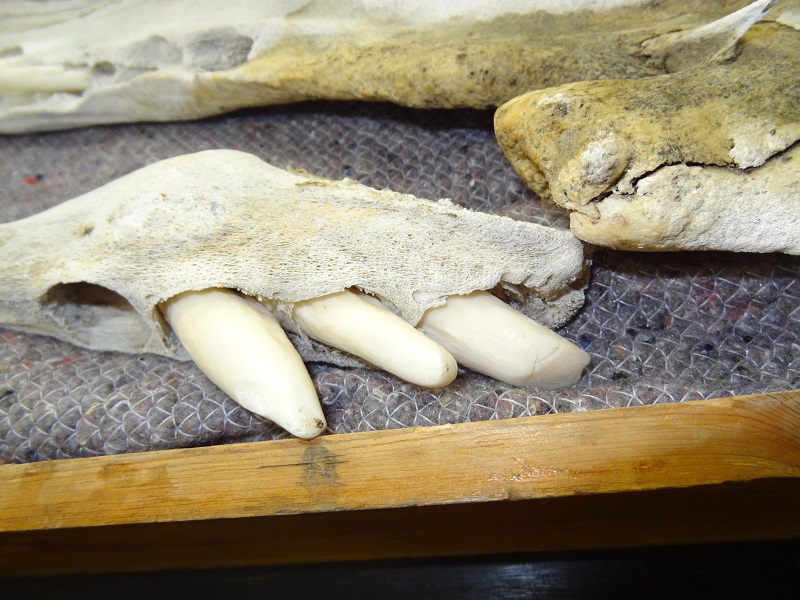
The most distal tooth on the left side was very small and much more posteriorly located then the fourth tooth on the right side. It was sadly lost, but the orientation of the tooth socket indicates quite clearly that it was pointing backwards.
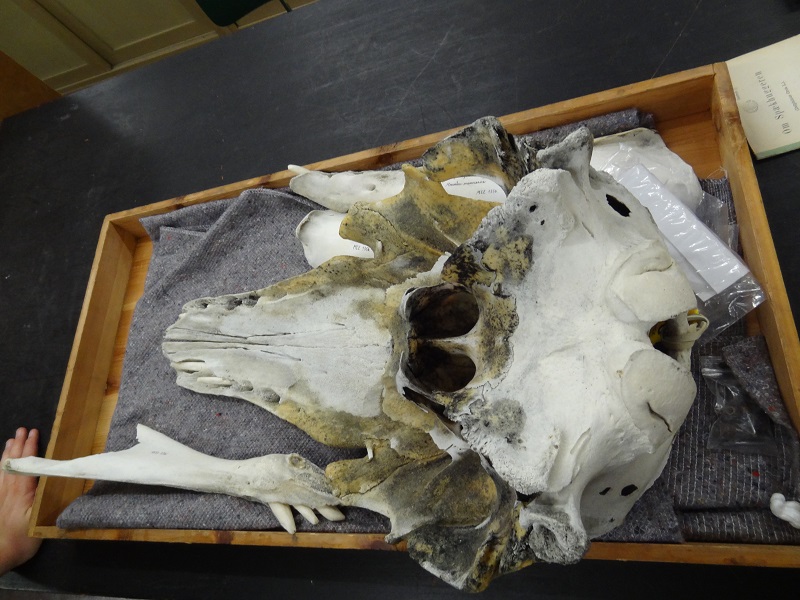
At the time of its first examination it was still not known if it really was a hybrid between a narwhal and a beluga, or just a really unusual narwhal with extreme dental anomalies. Genetic examinations however clearly showed that it really was a male hybrid, with a narwhal mother and a beluga father. Another really interesting result from the examination of carbon and nitrogen from the bone collagen revealed that the narluga differed in diet from both belugas and narwhals. The fish on which it preyed were apparantly from more benthic regions than those usually consumed by narwhals and belugas. Perhaps this diet resulted from the unique dentition of this individual, which made it harder to hunt and catch the more common prey animals of its parental species.
When I worked on the reconstruction of the living animal, I tried to take everything known about it into account. The shape of the skull, the orientation and abrasions of the teeth and the description of the external features like flippers, fluke and coloration, as well as the anatomy and life appearance of Monodon and Delphinapterus. I gave the narluga the head-to-body-ratio of a beluga and tried to make its external body shape intermediate between those of a narwhale and a beluga. Narwhals have streamlined bodies, but belugas have a very distinct neck area and weird fat deposits at their belly area.
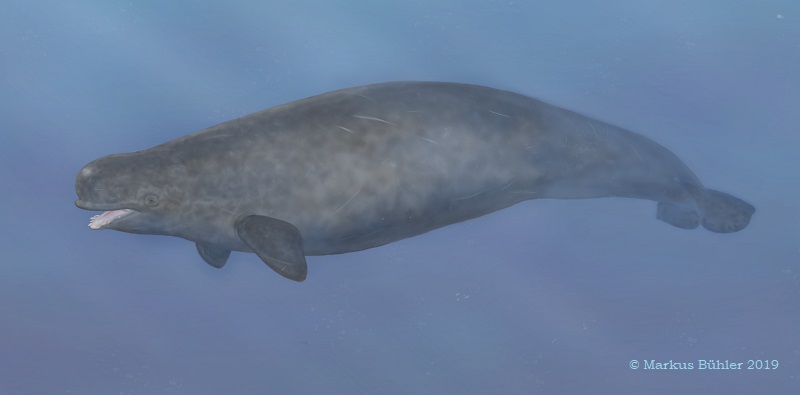
By far the most difficult part of the reconstruction was the head and mouth. Narwhals and belugas differ in several aspects of their cranial soft tissue. Belugas have – quite unusual for extant cetaceans – quite fleshy and flexible lips, which can be moved into a lot of shapes. Even more problematic was their ability to change the shape of their melon area, because this made it really hard to find a good reference with which I was happy, since every beluga photo looks different – even if it´s the same indivudual but with different melon shapes. I made many tries until I found something with which I was mainly happy and still somewhat intermediate between narwhals and belugas. I didn´t gave it beluga lips, but made them at least a big more pronounced than those of narwhals.
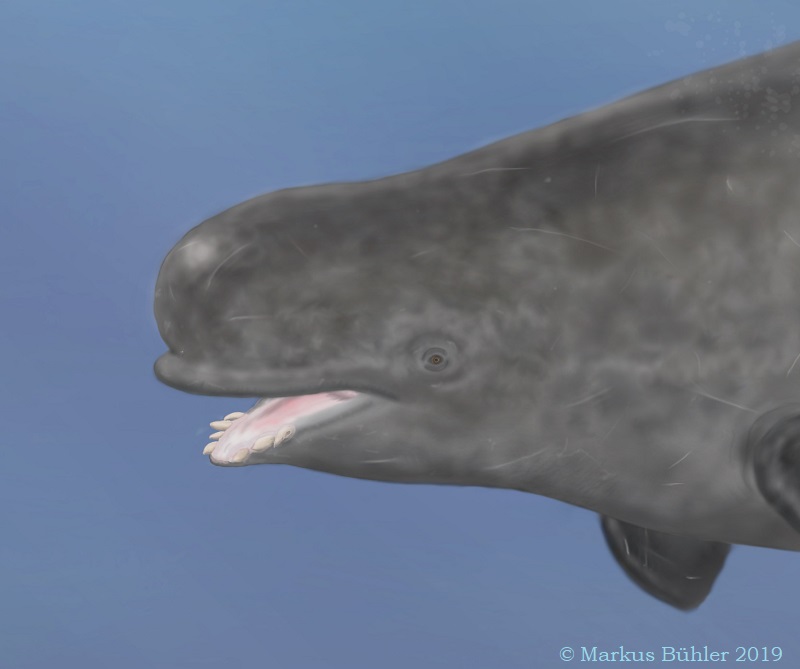
The upper teeth are not visible here (they usually never are visible from lateral views in most odontocetes). I directly used the original shape of the lower teeth of the articulated skull from an earlier press release to get them as correct as possible and to show also such features like the partial torquing and spiraling. The fourth left tooth was missing, so I had to reconstruct it from the position and size of its tooth socket, which show that it was much smaller than the other mandibular teeth, assymetrically distally located and backwards-pointing.
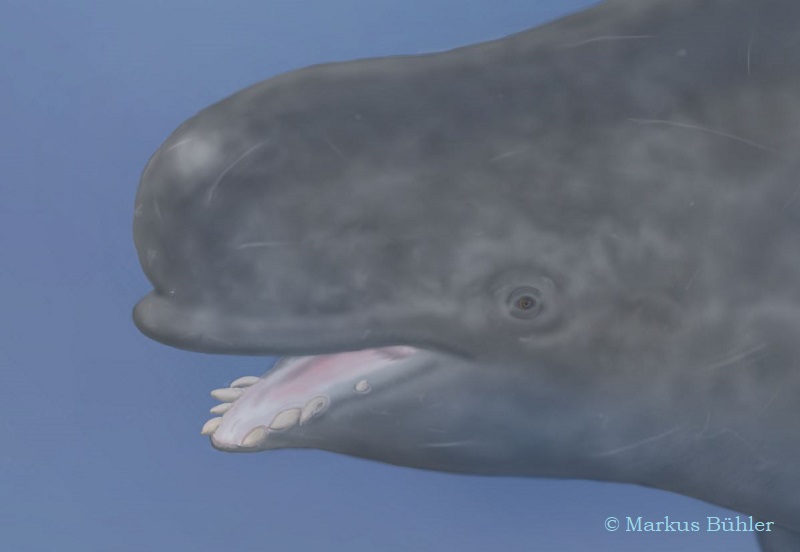
I nearly missed to portray a minor but important detail until the very end, the blowhole which is nearly invisible as this position. But luckily I just remebered to draw it before I sent the final version to Eline Lorenzen.
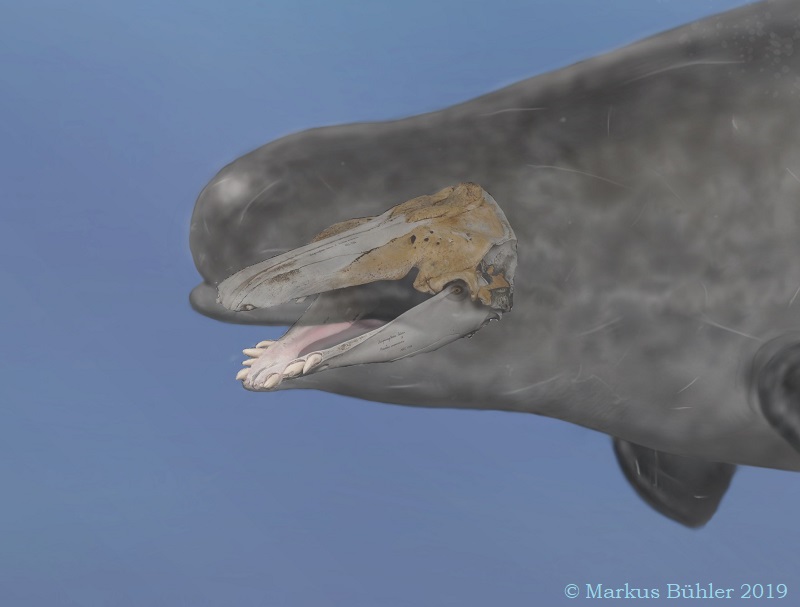
The coloration was described as gray and unlike those of narwhals or belugas. This is not that unusual that hybrids don´t just show intermediate patterns or colors of their parental species but unique new traits. Because both belugas and narwhals are comparably uniformly gray at young age, I used them as reference for the color of the narluga, with a very slight mottling reminiscent to those of juvenile narwhals. Because it was an older specimen, I gave it a few scars, because it is very likely that it received some from rocks and ice during its life.
To make the scenery a little bit more atmospheric I added a small swarm of polar cods (Boreogadus saida) in the background. This species occurs in the area where the narluga was shot, from river mouths to depths up to 900 m, what makes it a very well fitting faunal element, especially as it´s a very common food item for both belugas and narwhals.
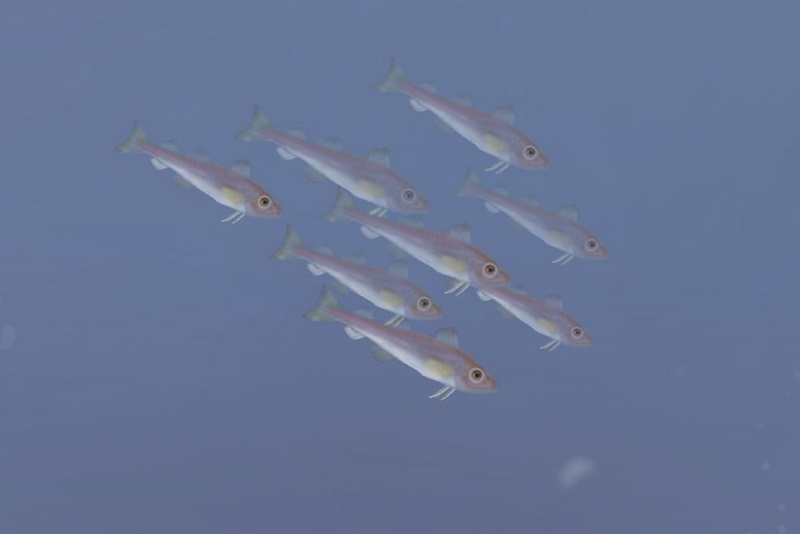
I made the flippers mainly based on the large pectoral fins of belugas, but somewhat lesser developed, but slightly darker than the rest of the body as seen in narwhals. The fluke shows the unusual „backwards“ shape of male narwhals (those of females look more normal), just somewhat lesser expressed. Like all my other digital art projects (for example my recent Basilosaurs), this was made with GIMP. The whole project took several months until it was finally finished, but it was also a really interesting and exciting project. A lot of it was surely speculative, even if based on some known known facts. Perhaps anytime we will see another, perhaps even living narluga, which will show how close my rendition was to the true life appearance.
Sources:
Heide-Jørgensen, M. P. & Reeves, R. R. Description of an anomalous Monodontid skull from west Greenland: A possible hybrid? Mar. Mamm. Sci.9, 258–268 (1993).
Mikkel Skovrind et al. Hybridization between two high Arctic cetaceans confirmed by genomic analysis, Scientific Reports (2019).
